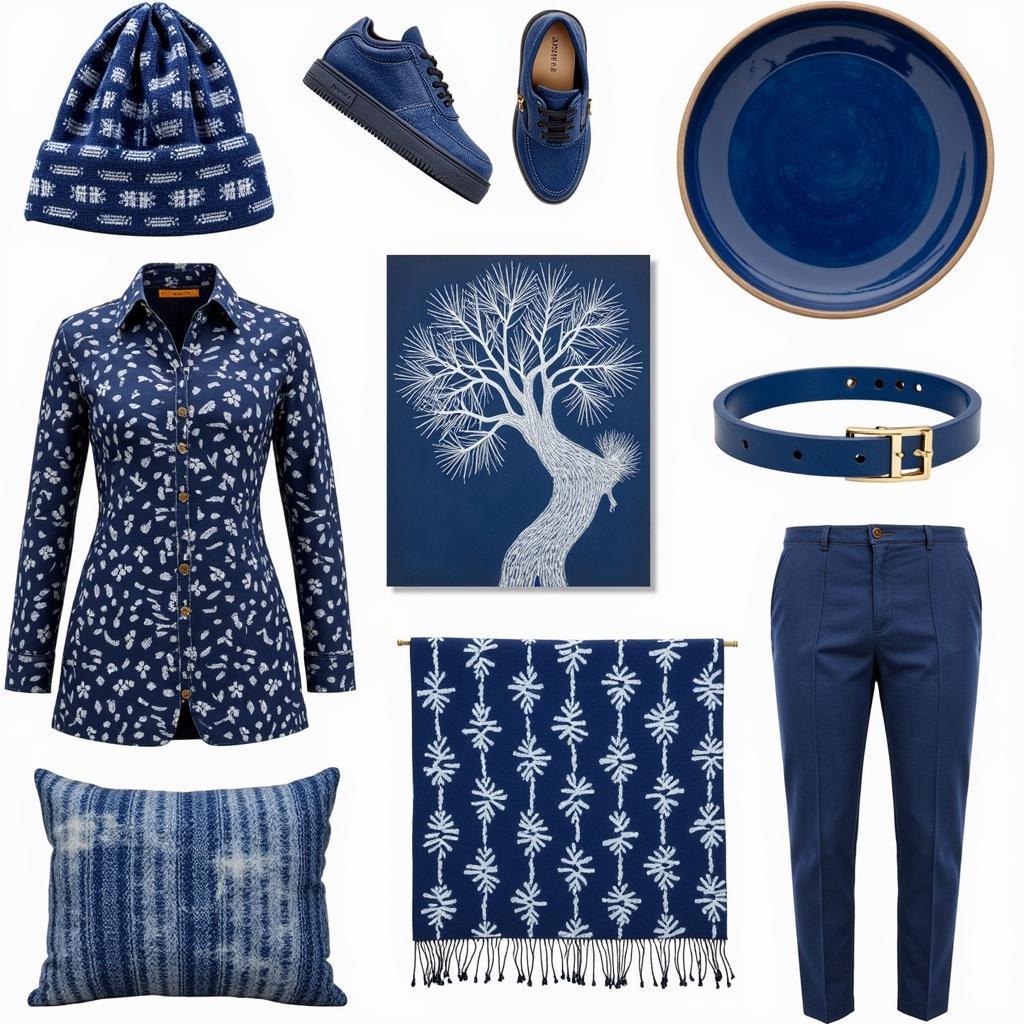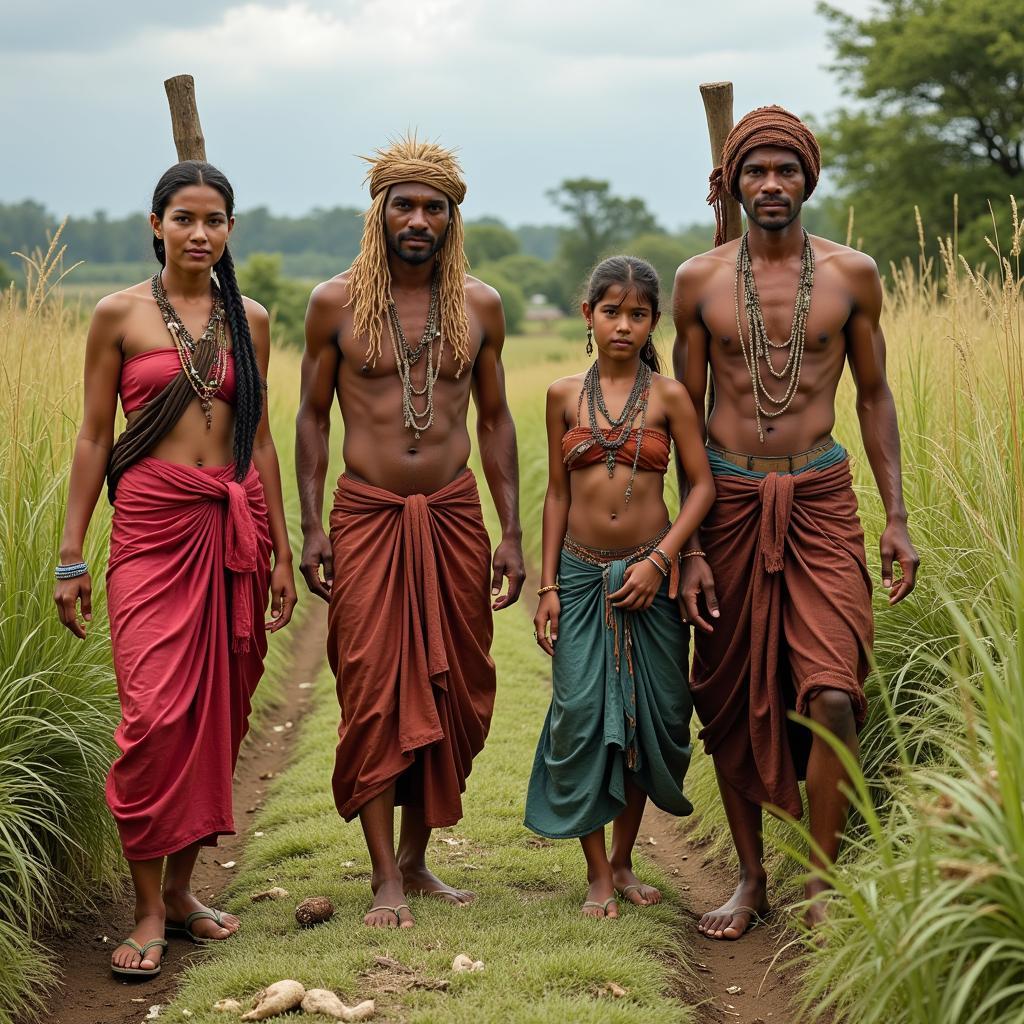Unlocking the Secrets of the African Indigo Plant
The African Indigo Plant, a cornerstone of textile traditions across the continent, holds a rich history and cultural significance. From its vibrant hues to its diverse applications, this remarkable plant has shaped artistic expression and cultural identity for generations. We’ll delve into the fascinating world of African indigo, exploring its cultivation, dyeing processes, and the profound impact it has had on communities throughout Africa. Learn about the fascinating journey of this plant, from its roots in the earth to its vibrant presence in art, fashion, and cultural rituals.
From Seed to Symbol: The Cultivation of African Indigo
African indigo, encompassing various species like Indigofera arrecta and Indigofera tinctoria, thrives in diverse climates across the continent. Traditional cultivation methods, passed down through generations, involve carefully selecting fertile land and employing sustainable farming practices. The process, often a communal effort, strengthens social bonds and reinforces the plant’s cultural value. Beyond its practical uses, the indigo plant often holds symbolic meaning, representing prosperity, spirituality, and connection to ancestral heritage.
More than just a dye source, African indigo represents community and heritage. Its cultivation strengthens social bonds as families and villages work together, passing knowledge down through generations. The resulting dye isn’t merely a colorant—it’s a tangible link to the past, imbued with the stories and traditions of the people who cultivate it.
The Art of Indigo Dyeing: Transforming Fabric into Canvas
The transformation of the African indigo plant into a vibrant dye is a fascinating process, steeped in tradition and expertise. Harvested leaves are fermented and processed, resulting in a rich, deep blue pigment. This natural dye is then used to create intricate patterns and designs on various textiles, each telling a unique story. Different regions across Africa have developed unique dyeing techniques, from tie-dye and resist dyeing to batik, showcasing the diverse artistic expressions linked to the indigo plant. Check out the beautiful African dress design pat inspired by indigo dyeing.
From simple stripes to complex geometric patterns, each design reflects the cultural identity of the artisan and their community. The process is not just about coloring fabric; it’s about imbuing it with cultural significance, creating wearable art that tells a story. What are the traditional African indigo dyeing methods? They range from tie-dye and resist dyeing to batik, each producing unique and beautiful patterns.
African Indigo: A Cultural Tapestry Woven in Blue
African indigo’s influence extends far beyond its use as a dye. It has become an integral part of cultural ceremonies, rituals, and everyday life. From clothing worn during important celebrations to traditional medicines and spiritual practices, the plant’s presence is deeply woven into the fabric of African societies. This enduring connection speaks to the profound significance of the African indigo plant and its lasting legacy. Learn more about the rich history of African indigo.
For centuries, the deep blue hues of indigo have adorned ceremonial garments, signifying status, spirituality, and connection to ancestors. The plant also plays a role in traditional medicine and spiritual practices, further emphasizing its multifaceted importance in African cultures. How is African indigo used in cultural practices? It features prominently in ceremonies, rituals, and everyday life, reflecting its deep integration into African societies.
Beyond Blue: The Evolving Role of African Indigo
Today, African indigo continues to inspire contemporary artists and designers. Its rich history and vibrant color are being reinterpreted in modern fashion, art, and home decor, bringing a touch of African heritage to a global audience. This renewed interest not only celebrates the enduring beauty of indigo but also helps sustain traditional crafts and empower communities. You can find stunning examples of African cloth necklaces incorporating indigo-dyed fabrics.
As the world embraces sustainable practices, the natural and eco-friendly qualities of African indigo are gaining even greater appreciation. The plant’s versatility extends beyond textiles to other crafts and applications, ensuring its continued relevance in a changing world. What is the future of African indigo? It’s a bright one, as contemporary artists and designers embrace its rich history and vibrant color, ensuring its continued relevance in the modern world.
 African Indigo in Modern Applications
African Indigo in Modern Applications
In conclusion, the African indigo plant remains a powerful symbol of cultural heritage and artistic expression. From its humble beginnings as a seed in the earth to its vibrant presence in art, fashion, and rituals, African indigo continues to enrich lives and connect generations. Exploring its story is a journey into the heart of African culture. Consider the vibrant legacy of the African indigo plant and its enduring impact on communities across the continent. For more information on African beauty traditions, you can explore African beauty ke machine. You can also learn more about the historical use of natural dyes by exploring African henna history.
FAQ
- What types of indigo plants are found in Africa?
- How is the indigo dye extracted from the plant?
- What are some common patterns used in African indigo dyeing?
- How is indigo used in African ceremonies and rituals?
- Where can I find authentic African indigo products?
- Is African indigo dyeing an eco-friendly process?
- How can I learn more about African indigo dyeing techniques?
Here are some other questions you might be interested in:
- What are the medicinal properties of the African indigo plant?
- How does indigo dyeing compare to other natural dyeing techniques?
- What are the economic implications of the indigo trade in Africa?
For further exploration, we recommend these articles:
- The History of Indigo Dyeing in West Africa
- The Cultural Significance of Indigo in East African Societies
- Sustainable Practices in African Indigo Farming
When you need assistance, please contact us by Phone: +255768904061, Email: kaka.mag@gmail.com or visit us at: Mbarali DC Mawindi, Kangaga, Tanzania. We have a 24/7 customer service team.


